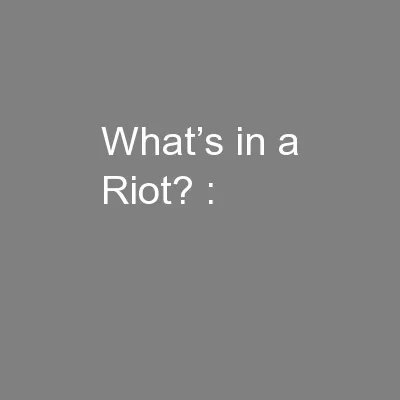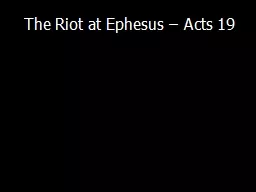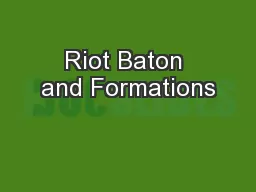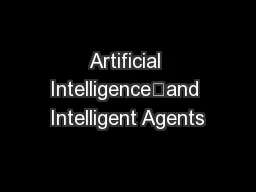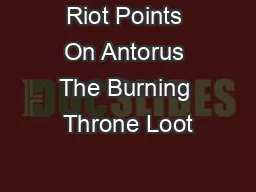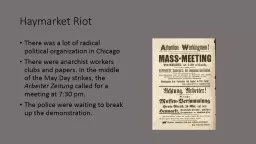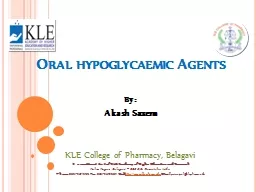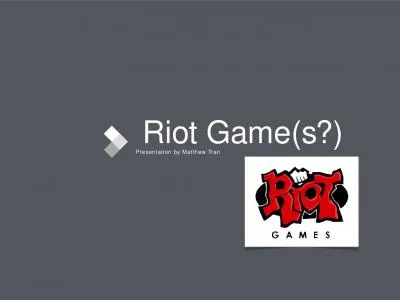PPT-RIOT CONTROL AGENTS RIOT
Author : conchita-marotz | Published Date : 2018-03-18
A situation in which a large group of people behave in a violent and uncontrolled way WHY RIOT CONTROL Angry mob involved in destructive activities Riot control
Presentation Embed Code
Download Presentation
Download Presentation The PPT/PDF document "RIOT CONTROL AGENTS RIOT" is the property of its rightful owner. Permission is granted to download and print the materials on this website for personal, non-commercial use only, and to display it on your personal computer provided you do not modify the materials and that you retain all copyright notices contained in the materials. By downloading content from our website, you accept the terms of this agreement.
RIOT CONTROL AGENTS RIOT: Transcript
Download Rules Of Document
"RIOT CONTROL AGENTS RIOT"The content belongs to its owner. You may download and print it for personal use, without modification, and keep all copyright notices. By downloading, you agree to these terms.
Related Documents

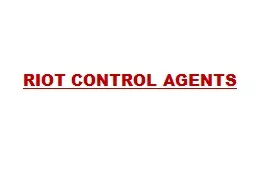
![Riot (Damages) Act, 1886. [49 & 50 VzcT. CH. 38.] ARRANGEMENT OF SECTI](https://thumbs.docslides.com/159507/riot-damages-act-1886-49-50-vzct-ch-38-arrangemen.jpg)
